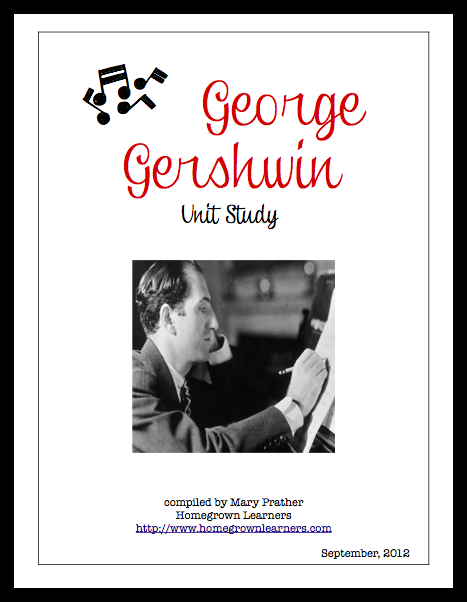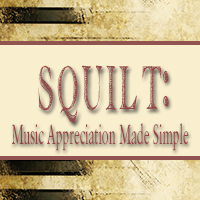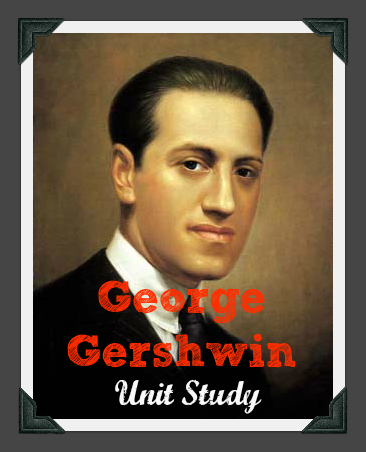
A study of music in the 20th Century could not be complete without the Jazz Age icon, George Gershwin. Gershwin's brithday is September 20, and in honor of that we have been learning all about him.
Known best for his blending of classical and Broadway styles, his music is upbeat, catchy, and reflects the budding America of the early twentieth century.
His quirky personality and toe-tapping music make him a logical choice to study with young children. His musical genius and contributions to the Modern Era of music make him a necessity for our older students to learn about as well.
Whether it is the ever popular Rhapsody in Blue or his famous opera Porgy and Bess, each piece he composed has a character that is unmistakably "Gershwin".
Let's celebrate his birthday (September 26, 1898) and learn all about this colorful composer!
I first fell in love with Gershwin's music when I was in high school. A piano teacher assigned his Three Preludes and there was something about them that captivated me (not to mention the difficulty!).
After hearing more Gershwin played in our home (you see, my parents would play on this interest and purchase records of composers I was learning about) I was sufficiently obsessed. My first dog, in fact, was named Gershwin!
I'll share a little information with you about George Gershwin, and then provide you with a downloadable/printable unit study for you to go through with your children.
About George Gershwin
Gershwin was actually born Jacob Gershowitz in Brooklyn, NY on September 26, 1898. He was the son of Russian Jewish immigrants. His father changed the name to Gershwin after immigrating.
George started showing an interest in music around the age of 10, but it was actually his brother, Ira, who had a piano purchased for him. It was, however, George who played it. By the age of 15 he was working in Tin Pan Alley and from that point he began writing songs with his brother Ira providing the lyrics.
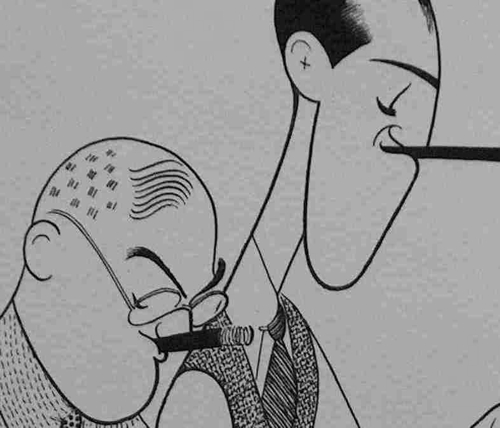 George and his brother, Ira
George and his brother, Ira
George had quite a colorful life. One of our favorite books about composers, Lives of the Musicians: Good Times, Bad Times (and what the Neighbors Thought), talks about his obsession with himself. He was very interested in his good looks, had a personal gym in his NYC Penthouse apartment, and actually had a refrigerator sized machine that was said to stimulate hair growth! He was also very concerned about his tan and large musicles.
He died on July 11, 1937 in Hollywood, CA from a brain tumor. He had two funerals simultaneously - one in California and one in New York.
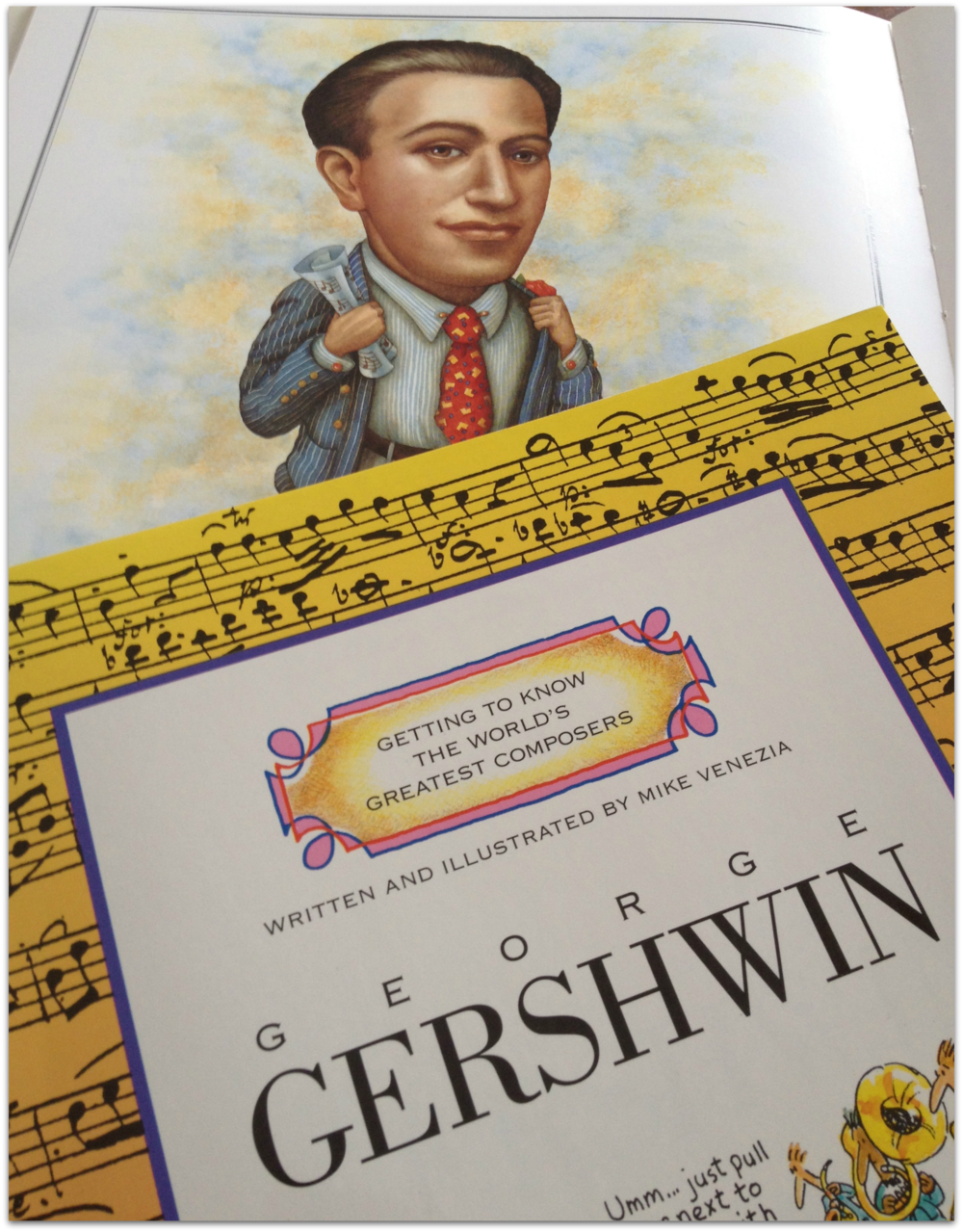
*In our study of Gershwin we used two books for biographical information:
- Getting to Know The World's Greatest Composers: George Gershwin
- Lives of the Musicians - Good Times, Bad Times (and What the Neighbors Thought)
The first book is solely about Gershwin, told in a story format with lots of fun cartoons. The second book features many composers and the quirky and interesting stories behind them. My children always remember more about composers when we learn from this book!
His Music
Gershwin's music was innovative and experimental at the time. It wasn't until the debut of his Rhapsody in Blue (1923) in New York that he was catapulted to fame. This piece, perhaps his most well known, is a blend of classical and jazz elements from his own life. It is said that he composed much of it on a train, and that the rhythm of the train on the tracks appears frequently in the piece.
The wailing clarinet at the beginning is the signature of this lively piece (I love this video of the piece because it shows children all of the instruments being played). This is just Part I, but you can easily navigate to Part II in YouTube if you're interested:
As I detailed in the unit study, my children read the book about Rhapsody in Blue (with accopanying CD) and then notebooked about the piece. They have been humming Rhapsody in Blue for weeks now!
While listening to Rhapsody in Blue I had my children draw what they thought it sounded like - my daughter chose to make her own version of a "listening map" for the piece. The idea here was to listen to the piece and think more deeply about the instruments, mood, and sections.

His Broadway musicals (particularly Porgy and Bess) are also of interest to children.
You would be amazed at the songs you know that have been written by Gershwin. One of the favorites during this study was Let's Call The Whole Thing Off. The play on words is fun, which is why I like this version that has scrolling lyrics:
For more information about his works, there is a wonderful PBS article "Meet the Masters" you can consult.
Classics for Kids also offers a great radio show for kids about George Gershwin.
If you are interested in soaking in a lot of Gershwin, I've created a Gershwin YouTube channel.
I have written a unti study for you to download. It is a compilation of resources about George Gershwin, along with a FIVE DAY PLAN TO STUDY THE COMPOSER. You don't need to purchase a single thing. It's all right here.
If you don't want to embark on a unit study, why don't you just use some Gershwin music during SQUILT time with your children? Or, use the resources listed at the beginning of the unit study to craft your own composer study.
Download the George Gershwin Unit Study by clicking the link or the image:
*For more music appreciation materials, visit my SQUILT site - where you will find music appreciation - MADE EASY!

